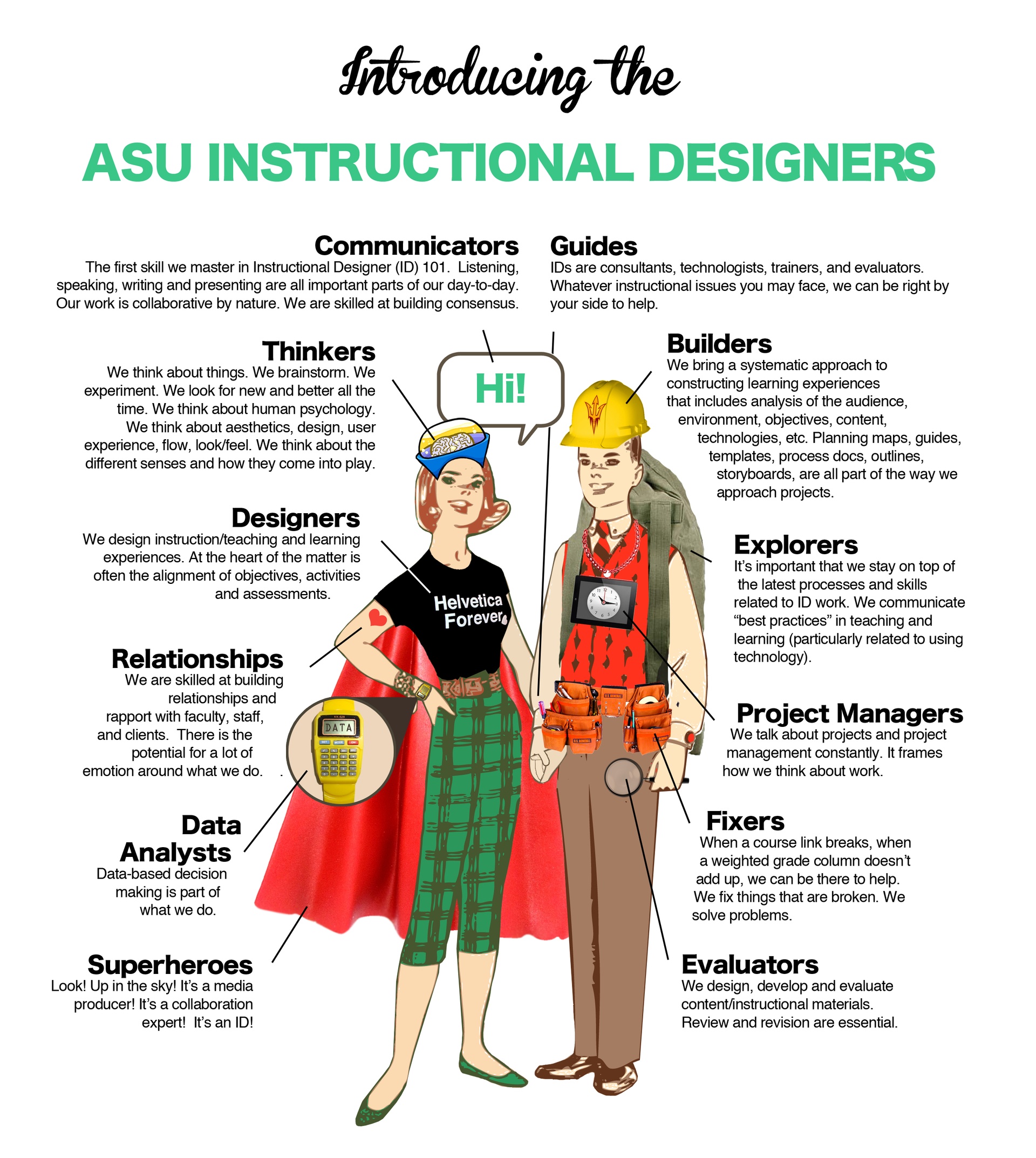Table Of Content

In most cases, it’s unlikely that Learning and Development (L&D) professionals will accomplish the above objectives by simply providing verbal or written instructions. For example, knowledge transference and application won’t happen from bullet-point text or check lists. Success depends on the thoughtful design of instructions that target specific learning outcomes. They differ in that systematic design begins with the assumption that instruction is the best method for enhancing human performance.
Gagne’s Nine Events of Instructions
It begins with an in-intensity evaluation of the learners and their need, followed via the design of instructional materials, improvement of these materials, implementation, and a non-stop evaluation loop. The iterative nature of ADDIE permits for refinement primarily based on remarks, making it adaptable to diverse getting to know contexts. Analysis refers to the gathering of information about one's audience, the tasks to be completed, how the learners will view the content, and the project's overall goals. The instructional designer then classifies the information to make the content more applicable and successful. An instructional designer should be well versed in the available quality-review tools, their implementation, and their utility throughout the design and development process to inform quality design decisions. The period after the interviews, charter, and alignment is a prime opportunity for the designer to establish the beginning of a vision and narrative.
Why Instructional Design?
The facilitators’ training should cover the course curriculum, learning outcomes, method of delivery, and testing procedures. Preparation of the learners include training them on new tools (software or hardware), student registration. Instructional theories also play an important role in the design of instructional materials. Theories such as behaviorism, constructivism, social learning and cognitivism help shape and define the outcome of instructional materials. We look at talent development holistically, we understand how instructional design fits with evaluation, training, evaluation and other aspects of workplace learning.

Fundamental 6: Continually Learn and Improve Through Teaching, Reflection, and Learning Analytics
Other reflections will reveal iterations that must wait for a refresh cycle of the course—ideally, immediately after the course is taught for the first time. If the instructor keeps a reflection log of these questions, asked at the end of each module, this log will serve as a valuable data resource for continual improvement. Sign up to get the latest industry tips, insights, and trends from our team of learning experts.
Meet the Instructional Design ‘First Responders’ Helping Faculty Teach in an Emergency - EdSurge
Meet the Instructional Design ‘First Responders’ Helping Faculty Teach in an Emergency.
Posted: Thu, 19 Mar 2020 07:00:00 GMT [source]
In the EdSurge article “UX to LX, The Rise of Learner Experience Design” (2016), Kilgore represented design thinking through the learner experience design lens. This model (Figure 4) closely aligns with how designers approach the application of design thinking in instructional design. While this model is also nonlinear (hence the dotted lines indicating returning to iterate), there are phases in the design process where different aspects of design thinking are emphasized, and discrete stages occur. High-quality instruction promotes effective knowledge transference and facilitates the application of knowledge to the workplace. The Dick and Carey model portray the ID process as a curvilinear flow using one-way arrows. It considers the entire learning ecosystem when designing learning content, including aspects such as the instructor, learners, learning materials, instructional activities, delivery system, and the learning and performance environment.

Design Your Course To Be Learner Community-Based
They will develop a thirst for knowledge that will keep them at the forefront of their field for a lifetime. Those who design instructional systems, therefore, must keep that goal in mind as they create their system. Let's explore some basic principles of effective Instructional Systems Design (ISD). ISD is based on the belief that training is most effective when it gives learners a clear statement of what knowledge they will gain through training and how their performance will be evaluated.
The model specifies tools and techniques for analyzing, designing, developing and formatively evaluating instruction based Gagnes five domains of learning. Gagnes domains, in turn, is an instructional theory that is based on cognitive information processing theories of learning. A central pillar of mainstream ID processes is knowing who the target audience is, and what their learning styles are. The process informs and guides the instructional systems designer into making data-informed, evidence-based decisions about user interfaces, course features and functionality, and the most appropriate learning experiences to deliver. No organization likes having “unique” learning processes at every location, department, branch, or subsidiary.
What is an Instructional Designer?
A philosophy professor, when teaching how to detect certain fallacies, would be wise to pass out several popular adverts to their students to see if they can put their theoretical knowledge to work. Memorizing truth tables and lists of informal fallacies is one thing. One way to determine learner needs and course objectives is by using Bloom’s Taxonomy. Bloom’s Taxonomy is a system used to define and distinguish different levels of learning.
However, many professionals earn degrees in social science, communication, English, and education, begin as teachers and instructors, and eventually move into instructional design. However, a career in education doesn’t necessarily mean teaching; other career paths include education administration, consulting, and even instructional design. One of the primary aspects of the discovery stage in design thinking is empathy mapping (Gibbons, 2018). Figure 6 shows a common structure for a learner-aggregated empathy map, and Figure 7 shows a sample of a completed learner empathy map for prospective students in a nursing course. In backward design (Wiggins & McTighe, 2011), the final assessment is considered first.
Second, in developing a unique problem-solving process he calls the ARCS Motivation.... Over the years, the steps were revised and eventually the model itself became more dynamic and interactive than its original hierarchical rendition, until its most popular version appeared in the mid-80s, as we understand it today. Obtaining a bachelor’s degree in instructional design or a related field is a common requirement for many educational organizations and institutions. Instructional designers also earn degrees in social science, communications, English, and education. Most instructional designers hold a bachelor’s degree in instructional design or a related field. Often an instructional designer and instructional technologist will pair together; there may also be videographers, graphic designers, and sometimes programmers involved if the learning experience is highly technical in nature.
Theories such as behaviorism, constructivism, social learning, and cognitivism help shape and define the outcome of instructional materials. Universal Design for Learning (UDL) is a way of thinking about teaching and designing learning experiences so that all students, of varying abilities and talents, have equal opportunity to learn (CAST, 2019). Universal design is not the same as accessibility (discussed later in this chapter). Whereas accessibility is focused on ensuring access, universal design is focused on ensuring opportunities to learn. A learning (or instructional) framework is a system of related theories, concepts, and approaches that drives methods of designing instruction and teaching people. Frameworks are rooted in particular learning and teaching paradigms, include one or more learning theories, and often have affordances and weaknesses in different situations, contexts, and purposes.

No comments:
Post a Comment